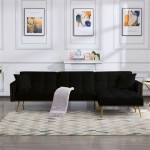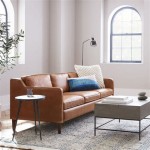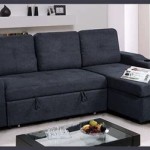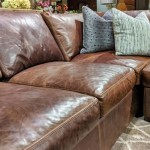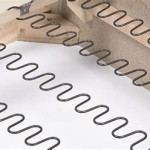Console Table Behind Sofa Decorating: A Comprehensive Guide
Decorating involves a careful consideration of space, function, and aesthetics. A console table placed behind a sofa offers a versatile solution for enhancing the visual appeal and practicality of a living room. This placement can transform an otherwise ordinary area into a focal point, providing both storage and decorative opportunities. The success of this design strategy hinges on selecting the right table, understanding proportion, and implementing thoughtful styling.
The function of a console table behind a sofa extends beyond mere decoration. It can serve as a buffer between the sofa and a wall, preventing scuffs and providing a sense of separation. It can also act as a charging station for electronic devices, a display area for personal mementos, or even a makeshift bar when entertaining. Furthermore, the added surface area is invaluable for holding lamps, books, or decorative items that might otherwise clutter the coffee table.
Selecting the appropriate console table requires careful measurement and consideration of the sofa's dimensions. The table should ideally be the same width as the sofa or slightly shorter. The height is equally crucial; it should be at or slightly below the sofa's back to prevent it from visually dominating the space. The style of the table should complement the overall aesthetic of the room, whether it's modern, traditional, rustic, or eclectic.
Key Point 1: Selecting the Right Console Table
The process of selecting the right console table involves assessing several factors, primarily focusing on dimensions, style, material, and function. Neglecting any of these aspects can lead to a visually unbalanced or impractical arrangement.
Dimensions: The width of the console table should be proportionate to the width of the sofa. As a general guideline, the console table should be no wider than the sofa. A console extending beyond the sofa’s edges can appear visually overwhelming and disrupt the room's flow. The height of the table should be considered; it is typically best to select a table that is at or slightly below the height of the sofa back. This will ensure the console does not visually block or obstruct the sofa.
Style: The console table's style should integrate with the existing décor. A modern sofa paired with a rustic console table might create a jarring contrast, unless intentionally incorporated as an eclectic design element. Consistency in style creates a cohesive and harmonious environment. Consider the design elements of the sofa, such as its upholstery, leg style, and general silhouette, and choose a console table that complements these features. For example, a sofa with clean, minimalist lines might pair well with a console table made of metal and glass, while a more traditional sofa might suit a wooden console table with ornate details.
Material: The material of the console table impacts its visual weight and durability. Wood, metal, glass, and acrylic are common options, each offering distinct characteristics. Wood provides warmth and texture, while metal lends a sleek, modern edge. Glass consoles can create an illusion of space, and acrylic consoles can add a touch of contemporary flair. The choice of material should also consider the room's overall color palette and the durability required. A heavily used console table may benefit from a more robust material, while a purely decorative console can be made from more delicate materials.
Function: While primarily decorative, the console table can also serve a functional purpose. Consider whether storage is needed. Console tables with drawers or shelves can provide useful space for storing books, remote controls, or other items. The table's surface can also serve as a charging station for electronic devices, reducing cable clutter and keeping essential items within reach.
Key Point 2: Styling the Console Table for Visual Impact
Once the appropriate console table has been selected, styling it effectively is crucial for maximizing its visual impact. This involves arranging decorative items in a balanced and visually appealing manner, considering elements like height, texture, and color.
Creating Height Variation: Varying the height of the objects placed on the console table adds visual interest and prevents a flat, monotonous appearance. Use a combination of taller items, such as lamps or vases filled with flowers, and shorter items, such as decorative boxes or small sculptures. Staggering the heights creates a dynamic and engaging display. Consider using books stacked on their side to elevate smaller objects or create a platform for displaying artwork. This adds dimension and ensures that each item is visible and contributes to the overall aesthetic.
Incorporating Texture: Textural contrast adds depth and richness to the console table display. Combine smooth and rough textures to create a tactile and visually appealing arrangement. For example, a smooth glass vase can be paired with a rough-hewn wooden box or a woven basket. The juxtaposition of textures adds complexity and prevents the display from appearing bland. Consider incorporating natural elements, such as branches, stones, or shells, to add organic texture and visual interest.
Balancing Color and Tone: Color plays a vital role in creating a harmonious and visually pleasing arrangement. Choose a color palette that complements the room's existing colors and consider incorporating pops of color to add visual interest. Balance light and dark tones to create a sense of depth and dimension. Using a dominant color and incorporating subtle variations can create a cohesive and sophisticated look. Consider using a color wheel to identify complementary colors that will enhance the overall aesthetic. For example, blue and orange, or yellow and purple, can create a vibrant and visually striking combination.
Creating Visual Triangles: Arranging objects in visual triangles is a common design technique that creates a sense of balance and visual interest. Group objects in odd numbers, such as three or five, and arrange them in a way that forms an imaginary triangle. This technique creates a sense of movement and draws the eye across the display. Varying the size and height of the objects within the triangle adds further visual interest. This technique can be adapted to fit various styles and preferences, making it a versatile tool for styling console tables. A tall lamp, a medium-sized vase, and a smaller decorative object can be arranged to form a visually pleasing triangle.
Adding Personal Touches: Incorporating personal items, such as family photos, travel souvenirs, or cherished mementos, adds character and personality to the console table display. These items can serve as conversation starters and create a sense of warmth and connection. Be mindful of scale and proportion when incorporating personal items, and ensure that they complement the overall aesthetic. Consider framing photos or displaying them in decorative stands to elevate their presentation. Grouping personal items together can create a cohesive and visually appealing display.
Key Point 3: Functionality and Practical Considerations
Beyond aesthetics, the console table behind the sofa should also be functional and practical. This involves considering how the table will be used and selecting items that enhance its usability without sacrificing style.
Incorporating Lighting: Lamps are an essential addition to a console table, providing both ambient lighting and task lighting. Table lamps can create a warm and inviting atmosphere, while also providing light for reading or other activities. Choose lamps that complement the style of the console table and the overall décor. Consider the size and scale of the lamps, ensuring that they are proportionate to the table and the surrounding furniture. The lampshade should also be chosen carefully to ensure that it diffuses light effectively and complements the overall aesthetic. A well-placed lamp can transform the console table into a focal point, adding visual interest and enhancing the room's ambiance.
Managing Cables and Electronics: A console table behind a sofa can be an ideal location for charging electronic devices. However, managing cables and preventing clutter is essential. Consider using cable management solutions, such as cable ties or cord organizers, to keep cables neatly arranged and out of sight. Power strips can be concealed within decorative boxes or baskets to minimize visual clutter. Choosing a console table with built-in cable management features can also simplify this process. Keeping cables organized and out of sight will prevent the console table from appearing messy and cluttered, enhancing its overall aesthetic.
Providing Storage Solutions: Console tables with drawers or shelves offer valuable storage space for items such as books, magazines, remote controls, or blankets. Utilizing this storage space can help to keep the living room clutter-free and organized. Choose storage solutions that complement the style of the console table and the overall décor. Woven baskets, decorative boxes, or stylish containers can be used to conceal items and keep them organized. Consider the items that need to be stored and choose storage solutions that are appropriately sized and designed. Effective storage solutions can enhance the functionality of the console table and contribute to a more organized and visually appealing living space.
Ensuring Accessibility: The console table should be easily accessible from the sofa, allowing for convenient placement and retrieval of items. Ensure that there is sufficient space between the sofa and the table to allow for comfortable movement. Consider the height of the table and the reach required to access items on the surface. The arrangement of items on the table should also be practical, allowing for easy access to frequently used items. Accessibility is key to ensuring that the console table is not only visually appealing but also functional and convenient to use.
Durability and Maintenance: Choose a console table that is durable and easy to maintain. The material should be resistant to scratches, stains, and other damage. Regular cleaning and maintenance are essential for preserving the table's appearance and longevity. Use appropriate cleaning products and techniques to avoid damaging the finish. Consider using coasters or placemats to protect the surface from spills and scratches. Regular maintenance will ensure that the console table remains in good condition and continues to enhance the living room's aesthetic for years to come.
The successful implementation of a console table behind a sofa requires a holistic approach, considering both aesthetics and practicality. By selecting the right table, implementing thoughtful styling, and addressing functional considerations, it is possible to transform an ordinary space into a visually appealing and highly functional area within the living room.

How To Style A Console Table Behind Couch 4 Ways

The Perfect Foyer Table Haute Off Rack Sofa Decor Farm House Living Room Diy

3 Ways To Style A Sofa Table

How To Style A Console Table Behind Couch 4 Ways

Sofa Table Ideas And Decor For Your Living Room Farmhousehub

How To Style A Console Table Behind Couch 4 Ways Living Room Sofa Decor

Divvy Up Your Great Room Using A Sofa Table To Redefine Space

30 Diy Sofa Console Table Tutorial Jenna Sue Design
:max_bytes(150000):strip_icc()/il_fullxfull.2223641074_gh2q_5000x-c5d0dba46970415db315eb0675b8c989.jpg?strip=all)
24 Sofa Table Ideas To Optimize Your Living Room

Calvin Console Table Sofa Decor Farm House Living Room

